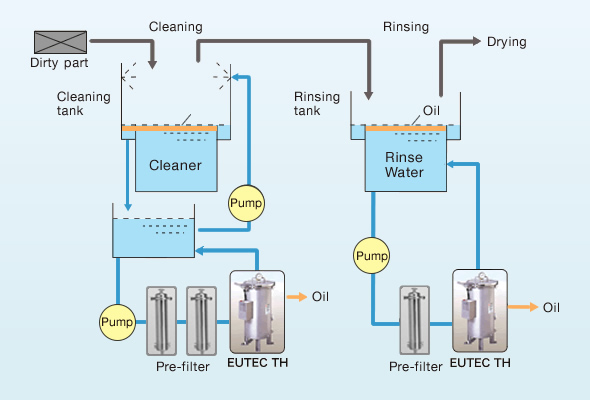Many manufacturing facilities and general workspaces are looking for alternative products to use in their daily operations, mainly those labeled “low-VOC’. Such products make claims that they are better for the environment and offer safer-to-use alternatives for the staff members who need to handle products during routine maintenance and cleaning. If you’re on the hunt for low-VOC products, then this will help you understand precisely what they are, why they came about, and in what contexts they can be helpful.
What are low-VOC products?
A VOC is a volatile organic compound. One of their key characteristics is that they can evaporate very quickly at room temperature. Because they’re so quick to evaporate, they can linger in the air where people work, which is why they’re so problematic in places like manufacturing facilities and workshops. These components are traditionally found in most cleaning and maintenance products but have recently been found to have adverse effects on human health and the environment. For example
These components are traditionally found in most cleaning and maintenance products but have recently been found to have adverse effects on human health and the environment. For example, workers who experience high exposure to such compounds found they were experiencing acute or chronic issues surrounding their respiratory health. Some cases have also come about where those exposed to VOCs developed health issues far later down the line.
Low-VOC or no-VOC products are those made without or with little concentration of such components, making them a preferable choice for anyone who has to work with industrial cleaning products on a day-to-day basis. Examples of such products include different types of aqueous cleaning solution and other water-based cleaners.
Why should more companies use low-VOC products?
As discussed, products with high VOC levels are dangerous to human health as well as the environment. If you run a company that depends heavily on cleaning products, like paint strippers, rust-removers, degreasers or oil removals, then low-VOC alternatives may be ideal. Low-VOC or no-VOC products are those made without or with little concentration of such components, making them a preferable choice for anyone who has to work with industrial cleaning products on a day-to-day basis.
Although products like paint strippers, for example, may, seemingly, require harsh chemicals to get the job done, there are plenty of products on the market that offer low voc paint stripping alternatives.
If you’re in a managerial position in a business that often uses such cleaning products, then you may also be required, under regulation, to switch over to low-VOC products. However, manufacturers of cleaning products have also come under heavy regulatory scrutiny, with the EPA taking action and implementing regulations under the Clean Air Act, which strives to reduce VOCs in consumer products by 90,000 tons per year. As a business owner or manager, you also have to take responsibility for the possible environmental impact your business has, so switching to low-VOC cleaning products may just be a step in the right direction.
What are the best examples of low-VOC alternatives?
Several businesses are now producing low-VOC alternatives. If you’re looking for such products, then you can look out for the following characteristics that will help you make the right decision:
- Look for Green Seal Certified Products: These products have been given an environmental stamp of approval and, therefore, likely do not contain high amounts of VOCs.
- Look for water-based or aqueous cleaning solution: These products use water as their base as opposed to solvents, so there are fewer VOCs released when the product is used for its respective purpose.
- Check out the ingredients on the packaging: If you’re unsure whether or not your cleaning products are classified as low-VOC, one of your first ports of call should be to look at the ingredients list on the back. Generally speaking, products containing less than 50 grams of VOCs per liter are considered low-VOC.
- Read the SDS: A Safety Data Sheet (SDS), which provides all the information you need about safe handling and application methods. If you have any questions about the VOC concentration, please consult this document.
Are low-VOC products right for you?
If you or your employees work in an environment where you’re often exposed to cleaning products, then it may be time to explore low-VOC products. For example, looking for low-VOC paint stripping products is ideal if you work with paint or often need to remove it from other objects. You can also chat with a trustworthy cleaning product supplier for more advice on getting low-VOC alternatives for your business.


